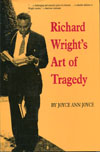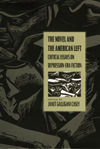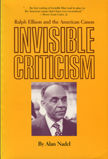Richard Wright's Art of Tragedy
"Joyce has given us a new in-depth reading of Native Son. By her use of a close reading of the text she interprets this naturalistic novel as a great artistic example of classical tragedy given the humanism of Shakespeare and Aristotelian Theory of old Greek tragedy. She clearly expresses the tragic vision of Wright and his creative genius in depicting the degradation of racism and Black life in white America."—Margaret Walker
"Joyce's clear, lively style matches her cogent analysis not only of the tragic essence of Native Son but its metaphorical web and linguistic complexities as well…This first book-length study devoted to one of Wright's major works is itself a major contribution to scholarship in the field."—Michel Fabre
"Richard Wright's Art of Tragedy is significant, new, and refreshing…Joyce does much to show that Wright was a better, more thoughtful artist than many say he was…The most exciting and important work on Wright's novel in years."—Russell Brignano
"The result of a careful, close reading of the novel and a detailed analysis of the secondary literature, Richard Wright's Art of Tragedy is a helpful tool for teachers and students."—Werner Sollors
In this first full-length study of Native Son, Joyce Ann Joyce provides a stylistic and thematic reading of one of the most important works of Black American literature, demonstrating how Wright's exquisite use of language merges with his subject to create an American tragedy.
Because many scholars have approached the novel from naturalistic and existential perspectives, Joyce devotes her first chapter to a discussion of the novel's critical history. She compares previous criticism to her own perspective of the novel as tragedy, describing the features shared by each as well as their points of demarcation.
In the following chapters, Joyce explores the setting and structure of Native Son, its characterization and point of view, stylistic technique, and thematic unity. As she explores Wright's technique, she illuminates the ironies and interlocking relationships which embody the salient metaphors and images in the novel. In doing so, she illustrates how each detail of language composes the pattern that makes Native Son a tragedy.
In the same way that traditional critical readings of Native Son have impeded fresh insights into the novel, criticism based on biographical perspectives has resulted in numerous misconceptions about Wright's works. Richard Wright's Art of Tragedy rectifies these misconceptions by shifting the critical emphasis to the artistic vision and masterful crafting of Wright's major work. With this significant volume, students and teachers can discern the stylistic creativity that makes Native Son not only a tragedy but a work of art.





